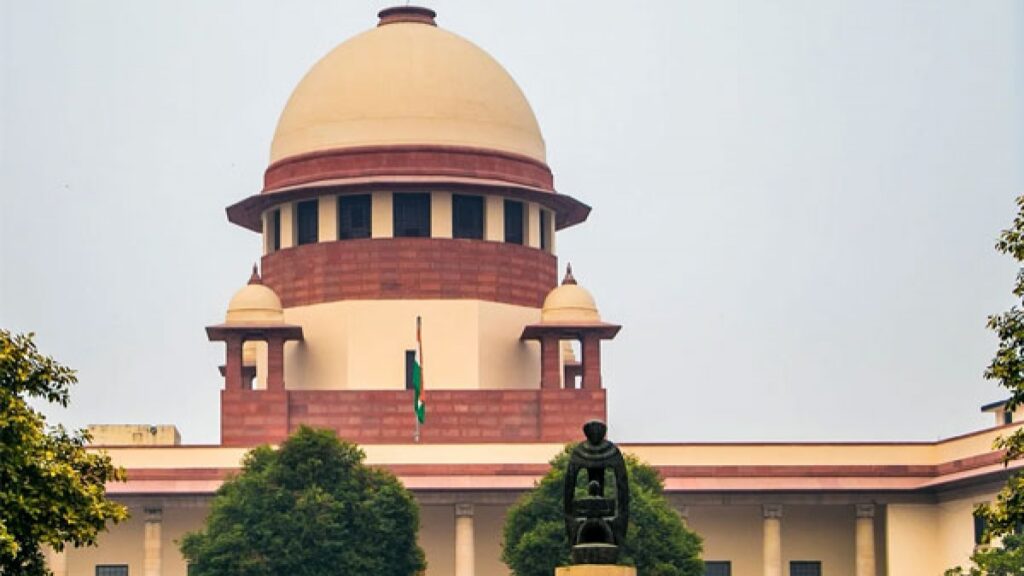Nithyakalyani Narayanan. V
The Supreme Court ruled in a significant decision on 15th March that retired High Court judges cannot be treated differently when calculating their pension benefits based on where they were elevated from the bar or the District Judiciary.
The Court concluded that the service as a District Judiciary member must be added to the service as a High Court judge in order to calculate the pension entitlement of a retired High Court judge who is elevated from the District Judiciary. The calculation of this pension must be based on the judge’s most recent pay from the High Court.
A three-judge Bench comprising Chief Justice of India DY Chandrachud, Justices JB Pardiwala and Manoj Misra, were deliberating over the case of a former Punjab and Haryana High Court judge.
The High Court Judges (Salaries and Conditions of Service) Act, 1954, was at issue in this case because of how its provisions should be interpreted.
Former Judge, Respondent No. 1, served on the District Judiciary from May 11, 1989, to July 31, 2014. On September 25, 2014, she was named a High Court judge, and on July 4, 2016, she announced her retirement. Her pension was determined by the Union Government using her most recent income as a District Judge rather than as a High Court judge.
The following arguments were made by the Union before the Supreme Court:
- Respondent No. 1 was not eligible to receive the benefits of Section 14 of the High Court Judges (Salaries and Conditions of Service) Act since they have not accrued 12 years of pensionable service as HC judges.
- The petitioner’s tenure was interrupted when he took on the role of High Court judge.
- Respondent No. 1’s pension would be calculated in accordance with Section 15, which means it would be based on his or her most recent district judge salary.
The Court noted that the Union’s petition overlooked the obvious ramifications of the Section 14 Explanation. The Court observed that the phrase “means and includes” appears in the Explanation.
The Bench held that Section 14 applies to judges who have not held any pensionable positions in the Union or the State, as well as those who have held pensionable positions but choose to earn their pension under Part 1 of the schedule.
“A judge, such as the first respondent, who has not opted to receive the benefits of pension part 1 of the schedule, would fall outside the purview of the explanation and hence Section 14 would have no application. The post-retiral benefits of such a judge would be governed by Section 15. Upon electing to receive a pension under Part 3 of the First Schedule, the first respondent was entitled to have the years of service which were rendered by her as a judge of the High Court cumulated to the years of service rendered as a member of the District Judiciary”, the Court observed.
The Court noted that if the Union’s position were to be accepted, there would be an obvious discrimination between a district judiciary member appointed as a High Court judge and a member of the bar who becomes a High Court judge.
The Court observed that under S14A, any retired HC judge appointed from the Bar after April 1, 2004, would have an additional 10 years of service added to their tenure. Their pensionary benefits would be calculated using their last-drawn salary as a High Court judge in addition to their years of service.
The Court declared that judges appointed to the High Court from the District Judiciary must also follow a similar rule. Any alternative reading would lead to overt prejudice amongst the judges of the High Court according to their originating source. In addition to being against the general plan and intent of Chapter 3 of the Statute, such an interpretation would diminish the value of the District Judiciary’s contribution to the nation’s judiciary.
The court determined that the first respondent was entitled to have her tenure as a member of the District Judiciary from May 11, 1981, to 31 July 2014, the time she spent serving as a judge of the HC.
It stipulated that her pension would be calculated using her most recent High Court judge salary. It was mandated that the pension arrears be paid with interest at the rate of 6% annually by May 31, 2024, at the latest.
The Union’s argument regarding her “break in service” was similarly dismissed by the Court. Her tenure as a District Judge was interrupted for one month and twenty-four days by her nomination as a High Court judge. For the straightforward reason that her nomination as a High Court judge followed a recommendation made when she was a member of the District Judiciary, the Court noted that this hiatus was unimportant.
The Court remarked on the significance of pensionary benefits, stating that such benefits are a necessary component of judges’ judicial independence. Owing to their lengthy tenure in the judiciary, judges may not always have access to the same opportunities as other service members upon leaving their positions.
The State bears the responsibility of providing pensions to judges in order to safeguard their post-retirement benefits and enable them to carry out their duties without fear of reprisal throughout their tenure as judges. Ensuring judges live in dignified conditions during their tenure and thereafter is a crucial aspect of the public interest. An essential element of the rule of law is the judiciary and the judges who preside over it. A key component of the constitutional framework’s recognition of the independence of the court is the provision of salaries and respectable working conditions.
Name of the case: Union of India Ministry of Law Justice vs. Justice (Retd.) Raj Rahul Garg (Raj Rani Jain) | SLP (C) No. 007246 – / 2019
Bench: Chief Justice of India DY Chandrachud, Justices JB Pardiwala and Manoj Misra

